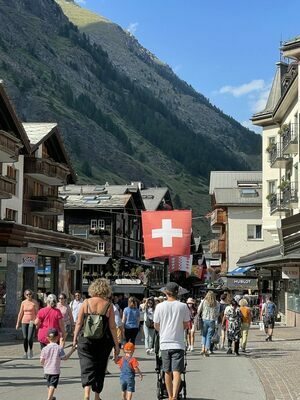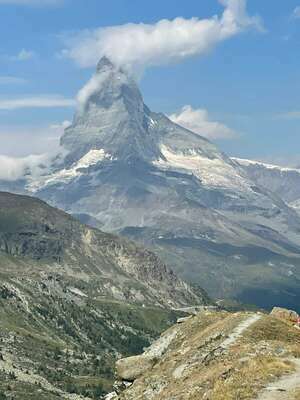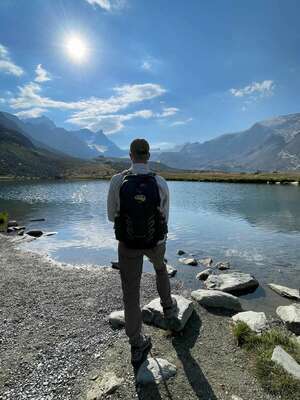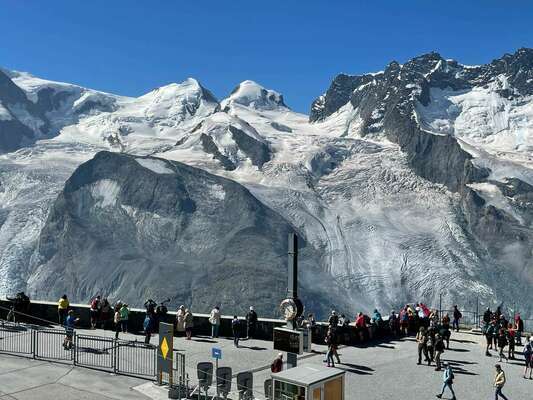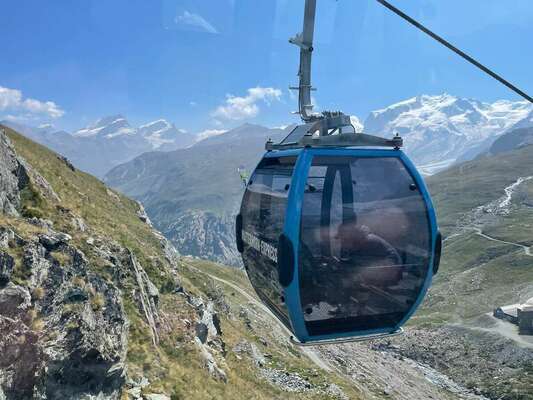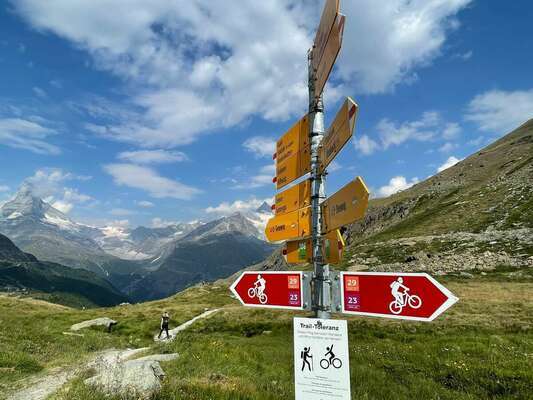Latitudes: Discover quintessential Switzerland in the realm of the mighty Matterhorn
Ah, the Matterhorn! One of the most distinctive of all Alpine peaks and a symbol of Switzerland, this mountain exerts a powerful draw on people’s imaginations. Its unique shape is recognizable all over the world. This is partly due to the fact that the Matterhorn’s image has been used on numerous products over the years, including chocolate, cheese and muesli packaging, beer cans, men’s swimwear and even cigarettes. And of course, there’s the Matterhorn bobsled ride at Disneyland.
The Matterhorn is one of the most photographed subjects in the world. Though the mountain at 14,000 feet is not the highest, nor the most difficult to climb, its pyramidic shape is what distinguishes it and makes it iconic. And its rocky peak exists in perfect isolation amid an enchanting alpine landscape.
Over three million people per year visit the area, including approximately 3,000 climbers that summit the mountain annually. To learn about the history of the mountain, check out the Matterhorn Museum in Zermatt. This fascinating underground center shows how alpinism was experienced in the past and how it’s still developing today.
During my trip to Zermatt, I was able to witness the beauty of the Matterhorn in the flesh. I quickly discovered, though, that the mountain can be shy, preferring to remain elusive when enveloped in the clouds. And when the skies are gray, it appears to loom in a haunting, Mount Doom kind of way. The key to seeing (and getting that perfect pic of) the Matterhorn in all its glory is patience and perseverance–that or plain luck.
Being based in Zermatt during my stay was ideal, as this is a town that has kept its traditional Swiss character, complete with old chalets and cobblestone roads. Plus, it’s pedestrian friendly due to being a car free zone. And most importantly, it offers easy access to the mountains.
Each day I set out to explore the area using a mix of gondolas, cable cars and funiculars. These transportation modes are convenient and efficient, not to mention loads of fun, as they whisk you to various junctures in the region. Multiple trails lead you to optimal viewing spots to appreciate the scenic splendor.
One day, I did the popular Five Lakes Trail, a moderate, looped trail with a few hills. Along the route you can see the Matterhorn reflected in several of the lakes, making it a photographer’s dream.
Another day I hiked the Matterhorn Glacier Trail. This route takes you in the path of retreating glaciers. It’s a fairly high-altitude hike, which allots you dramatic views of different landscapes, from verdant forests to snowcapped peaks.
Additionally, I trekked to Gornergrat from Riffelalp, a classic trail that boasts stunning panoramas of the Gorner Glacier along with mirror images of the Matterhorn reflected in the mountain waters.
I also took a trip up to Matterhorn Glacier Paradise. At 12,740 feet, it’s the highest cable car station in Europe. To reach this destination involves a series of cable cars. Upon arrival, you’ll have 360-degree, jaw-dropping views across the Alps, where, on a good day, you’ll be able to see 38 mountain peaks and 16 glaciers that span across Switzerland, Italy and France.
The place is always covered in snow and there are plenty of opportunities to go skiing year round. There’s also the Glacier Palace to visit, which is full of ice carvings and sculptures.
When you’ve had your fill of this wintry mecca, head back down to Zermatt and warm up with some raclette, a classic Swiss dish that’s a cheese lover’s deli
Please support The OutdoorsNW by subscribing today!
You may also like:
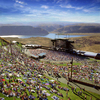
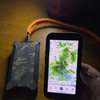
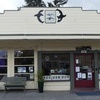
.png)


